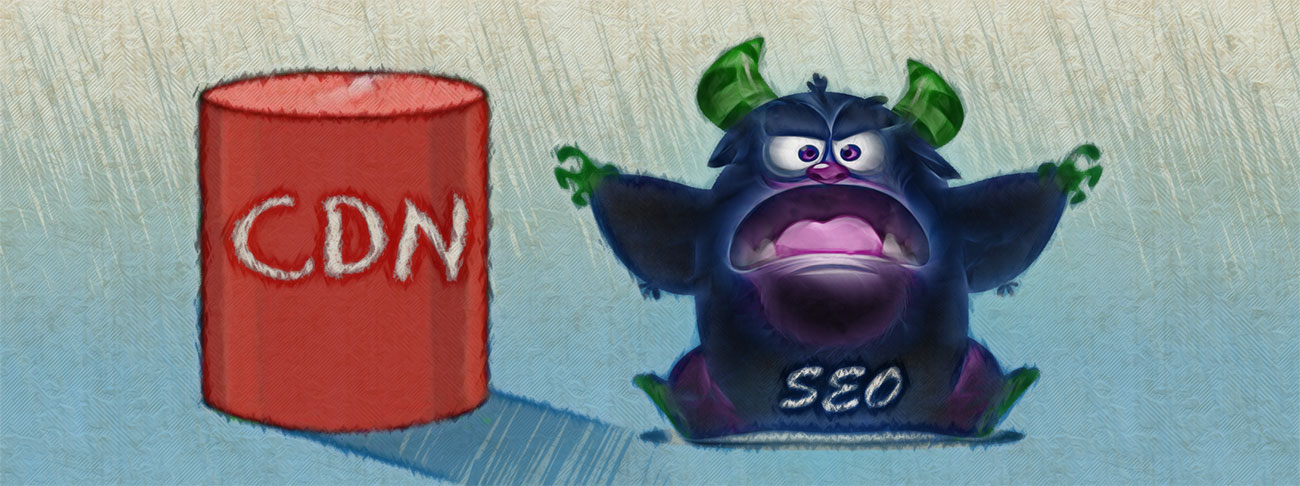Have you ever wondered whether using a Content Delivery Network (CDN) has a negative impact on your website’s search engine optimization (SEO)? You may have come across various conflicting opinions on this matter. While many articles emphasize the importance of page load speed, there are additional factors to consider.
First and foremost, let’s clarify what CDNs are and how they are utilized. If you’re already familiar with this, feel free to skip ahead to the main articles provided below:
What Is a Content Delivery Network (CDN)?
Have you ever wondered what exactly a Content Delivery Network (CDN) is and how it functions? Let’s demystify this essential web tool. A CDN is an external service provider that works alongside your web server to host files such as videos, software, and JavaScript, among others. By integrating a CDN into your CMS (Content Management System), your media files are displayed from an external source rather than directly from your website. To illustrate, let’s explore how CDNs can be utilized for images:
Imagine you have an article with the URL:
somedomain.com/superb-article
Instead of having the hero image hosted by that URL
https : // somedomain.com/uperb-image.jpg
…you can choose to have it hosted via a CDN, resulting in a link like this:
https : // 88641-presscdn-0-17-pagely.netdna-ssl.com/superb-image.jpg
CDNs don’t host your entire content or website; instead, they assist in caching page components such as images and videos to enhance their loading speed. With data centers situated across the globe, CDNs ensure swift access to cached content, no matter where your audience is located.
Why Use Content Delivery Networks (CDNs)?
We all know that a slow website can result in a lower rank on search engine result pages. After all, Google is committed to providing users with a seamless and enjoyable browsing experience. But what happens when your website starts to grow, and the traffic multiplies? Is moving to a faster web server host the ultimate solution, or could Content Delivery Networks (CDNs) hold the key to unlocking a better browsing experience?
It’s not uncommon for web hosting providers to recommend CDNs when they struggle to deliver optimal server speeds. However, in my experience, hastily suggesting CDNs as the first alternative may not be the most well-thought-out solution. More often than not, the root cause lies in the provider’s inability to offer satisfactory server performance. In such cases, the best course of action is to seek a new hosting provider and disregard their recommendation for CDNs. Allow me to elaborate on why this approach is crucial:
As your website grows into a digital behemoth, the challenges of managing traffic and speed become more apparent. Particularly when you find yourself grappling with the need to deliver millions of files, such as images, on a daily basis, the symptoms of slowdowns become all too real. Bandwidth limitations and compromised server speeds begin to take their toll, directly impacting user experience. Ultimately, Google will notice if you’re unable to keep up with the need for speed, and your website’s ranking may suffer.
While increased sessions are undoubtedly an SEO blessing, the accompanying slowdowns create an SEO nightmare. Welcome to the vicious circle of SEO, where balancing user engagement and site performance becomes an ongoing challenge.
Why Use a CDN?
When it comes to optimizing web pages, the primary motivation for utilizing CDNs lies in the pursuit of speed. CDNs offer a simple yet effective solution to tackle the frustrating delay often experienced when loading media content. Particularly for websites that deal with an extensive volume of images, videos, and articles — think news organizations — managing the data traffic caused by these media files can be a daunting task.
Picture this: Your website receives millions of clicks daily, a truly awe-inspiring achievement. However, even something as seemingly innocuous as images can generate substantial traffic and put a strain on your bandwidth.
Naturally, there are alternative approaches to addressing this challenge without relying on CDNs. You could consider installing load balancers, redesigning your database infrastructure, expanding the number of servers, and constantly seeking additional bandwidth. Additionally, optimizing images with formats like WebP should be on your to-do list.
But here’s where CDNs shine.
By outsourcing the hosting of your larger files, including illustrations, images, and videos, to specialized external hosts equipped to deliver such media content swiftly, you can bid farewell to those worries. CDNs offer a faster and more cost-effective alternative to scaling your web server infrastructure and maintaining it.
This solution may seem ideal, but there is an SEO flipside that warrants consideration, which we’ll explore later in this article. First, let’s delve into the inner workings of CDNs and how they bring speed and efficiency to your online presence.
How Does a Content Delivery Network (CDN) Work?
In today’s digital landscape, most Content Management Systems (CMS), including popular platforms like WordPress, offer plugins specifically designed to handle CDNs. Once integrated with your CMS, the process of handling media files, such as images, remains seamless. From the perspective of an editor working within the CMS, it appears as if nothing has changed. The media files are still uploaded through the CMS interface, just like before. However, behind the scenes, a remarkable transformation takes place.
The magic begins as the CMS automatically redirects the media files to the CDN while ensuring that these files are loaded from the CDN itself. To the editors, the existence of the CDN remains virtually invisible since everything on the CMS backend appears unchanged. But as an SEO enthusiast, a closer inspection of the web page’s source code reveals a noteworthy distinction — the image is not being loaded from your website’s domain but from an alternative domain.
It’s important to note that even using a subdomain qualifies as employing a separate domain.
When you leverage CDNs for your images, for instance, all of your image files are delivered through the CDN. This implementation brings about a significant boost in page load speed since CDNs are purpose-built to efficiently deliver large data files at lightning-fast speeds. CDNs leverage high bandwidths and employ scalable server infrastructures equipped with advanced features like load balancers and finely-tuned Database Management Systems (DBMS) to ensure optimal performance.
The SEO Advantages of CDNs
By offloading the delivery of larger files, such as images, to a CDN, you significantly reduce the amount of traffic generated by your website. As a result, your pages become extremely lightweight from a load speed and traffic perspective. This optimization for page speed is a remarkable SEO advantage in itself.
However, page speed appears to be the primary SEO benefit of CDNs. Therefore, it’s essential to identify the scenarios in which utilizing a CDN makes sense.
One key consideration is the handling of larger video files. Leveraging a CDN to enhance the page speed for video files can be a wise decision. Since Google typically doesn’t index video files unless they are from platforms like YouTube, if your website contains numerous embedded video files on the same web server, using a CDN instead of directly hosting the video files can be a beneficial approach.
The SEO Disadvantages of CDNs
While many articles emphasize the positive impact of CDNs on page load speed, they often overlook a critical disadvantage: image optimization.
In my experience, over 95% of SEO practitioners fail to fully leverage the potential of Search Engine Optimized (SEO) images. In my article on “How to use SEO Optimized Images“, I stress the significance of using unique images for web pages. Through the years, incorporating unique images has proven to be one of the most effective SEO tactics. You may want to explore the section where I discuss “Image Optimization is a blessing for Smaller Campaigns” in that article. Additionally, many companies miss out on harnessing the power of formats like WebP.
If your website is on par with renowned platforms like Times Magazine, Forbes, or USA Today, you may not be overly concerned about using a CDN to host your images. As one of the top-ranking websites, image optimization might not be a priority for you.
However, if your website doesn’t belong to the top 100 largest websites globally, utilizing a CDN for image hosting raises a significant issue. By hosting your images on another web server or URL, you unintentionally surrender Google’s trust in those images to an external source. From a Google standpoint, these images are no longer an integral part of your website. This undermines the positive effects of image optimization, such as well-crafted ALT tags, unique visuals, captivating captions, and SEO-friendly file names, as highlighted in my “Image Optimization Article“.
In essence, using a CDN for image hosting dilutes the SEO benefits associated with image optimization. You’re essentially signaling to Google that your images belong somewhere else, compromising the overall impact on your website’s SEO performance.
Google's Standpoint on CDN for Images
When it comes to Google’s standpoint on utilizing CDNs for images, the search engine giant remains relatively silent on the matter. However, it is safe to assume that Google prefers websites to utilize faster servers, such as CDNs, to enhance the overall user experience by improving load speeds.
From Google’s perspective, the use of CDNs is beneficial, as it aligns with their goal of delivering a seamless user experience. However, Google is unlikely to make a distinction between the URLs hosting the images and the original website. As long as the user experience is enhanced, Google is satisfied. Their primary focus is on providing the best possible user experience rather than considering how well a website will be ranked.
It’s important to note that Google may or may not crawl these images for their image search portfolio. However, they won’t pay much attention to the connection between the original URL and the CDN URL. For all Google knows, that image may not even be associated with your website.
In essence, using a CDN for image hosting means you won’t receive any specific SEO credits for those images, regardless of their quality or relevance to your content. Google’s focus shifts solely to the content itself rather than the images when they are hosted separately.
This doesn’t necessarily mean your web page won’t rank well on search engine result pages (SERPs). Google will still consider your content for ranking purposes. However, it’s important to recognize that by hosting your images on a separate URL, you miss out on valuable image optimization opportunities.
In conclusion, unless your website receives substantial traffic exceeding 100,000 visitors per month, there is no compelling reason to use CDNs for image hosting.
CDN Alternatives
If you find yourself in a situation where using CDNs is necessary, it’s worth considering the option of using a subdomain. Many CDNs offer the capability to create a subdomain within your domain, specifically designed to host your images. By modifying the DNS records and propagating a designated subdomain, such as images.yourdomain.com, to the Content Delivery Network, you can maintain the appearance of the images residing within your domain ecosystem. However, this is not a guaranteed solution.
While using a subdomain is a good starting point, it’s not always certain that Google will recognize the subdomain as an integral part of your website. In this case, where only images would reside under the subdomain, Google is more likely to view the subdomain as a file archive or a separate entity unrelated to your main website. Google’s treatment of subdomains can vary depending on individual websites, as their algorithms handle subdomains differently for each site.
Our research indicates that Google treats larger websites like Times Magazine differently compared to smaller ones in terms of crawling and indexing. Google employs specialized “Focused Crawlers” for giant websites, which operate as gatekeepers of the web. These Focused Crawlers are part of Google’s proprietary methodology and are not widely discussed. Essentially, some websites receive a distinct treatment due to their prominence and influence.
However, it’s essential to temper expectations and understand that your web project may not receive the same specialized treatment unless you have a unique relationship with Google’s CEO.
The most effective ways to enhance image loading speed are by utilizing formats like WebP and ensuring you have a fast server. Our research on several smaller website projects utilizing CDNs revealed that they were not receiving SEO credits for their images. In fact, many of these images were not even discoverable through Google Image Search. Some of these websites employed CDNs as subdomains, hoping for a positive impact, but unfortunately, it did not yield the desired results.
To summarize, if your website is not one of the largest global platforms grappling with high traffic and slow load speeds, it’s advisable to avoid using CDNs for images altogether. Keeping your images under the same URL is the best approach if you want to capitalize on image SEO, unless your website possesses an overwhelming number of images that cannot be managed efficiently, leaving you no choice but to leverage a CDN.
Tell us more about your business and we'll tell you how we can help!
GET IN TOUCH!
 by
by 


Hi,
Very helpful article, thank you! If I may point out some issue: the skippng links in the beginning don't work (using chrome desktop browser).